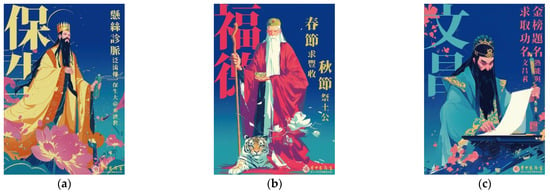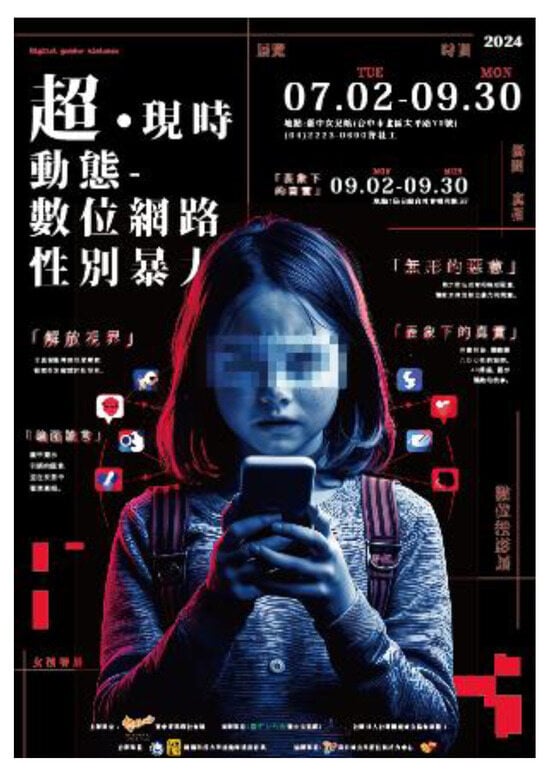Abstract
Generative Artificial Intelligence (GenAI) is transforming design, but its integration into education presents challenges. This study investigates GenAI’s application in visual design courses to enhance student creativity. Through hands-on projects using text/image generation tools for design competitions and a questionnaire survey (N = 102) assessing creativity factors (sensitivity, fluency, flexibility, originality, elaboration), GenAI’s impact was evaluated. Findings show GenAI significantly enhanced textual creativity (fluency, flexibility). Its effect on visual originality was perceived as less impactful, though project outcomes were successful. GenAI boosts efficiency and creativity, but pedagogy must balance AI aid with fostering critical thinking and unique expression.
1. Introduction
In rapid globalization and digitalization, the design industry has entered a phase of high efficiency and intelligent innovation. Generative artificial intelligence (AI), known for its capabilities in data creation, image recognition, and automated content generation, is increasingly integrated into commercial design. AI models produce outputs resembling human outputs to push creative boundaries and enhance efficiency and inspiration.
With machine learning, generative AI automates the creation of visual, textual, and musical content [1]. For visual and commercial design, it accelerates initial conceptualization, facilitates clearer communication with AI-generated visuals, and allows designers to personalize workflows. This technology enhances creativity by providing diverse ideas and solutions, offering perspectives that designers initially consider [2]. Furthermore, it boosts design efficiency, reduces costs, and shifts designers’ roles from task execution to strategic oversight, enabling innovation [3]. Generative AI brings transformative potential to design with challenges. Designers must embrace new tools and enhance skills to remain competitive [4]. In commercial applications, AI improves branding, advertising, and interface design, offering innovative ways to reduce time and effort. As a result, AI has become a key competitive asset for designers and businesses.
Recognizing this trend, Taiwan’s Ministry of Education launched the “Taiwan AI College Alliance” (TAICA) with 25 universities to foster talent, share resources, and drive innovation [5]. Despite these efforts, Taiwan’s design education still faces challenges in fully integrating AI. Limited courses and practical training leave many students, especially those accustomed to traditional methods, struggling to overcome technical barriers and adapt to this emerging field.
Research on creativity has its origins in psychology and education. Guilford [6] emphasized its significance, sparking academic interest and establishing a foundational framework for understanding creativity’s multidimensional nature. Guilford’s “Structure of Intellect” model viewed creativity as a composite of various mental abilities rather than a singular skill. Based on a review of the literature related to creativity [7,8,9], creativity was categorized into the following five key factors in this study: sensitivity; fluency; flexibility; originality; and elaboration. These elements are critical for addressing common challenges in “copywriting” and “graphic design.”
The rise in generative AI in global design fields demands Taiwan’s design education adapt to enhance students’ technological literacy and creativity. Humanities students often excel in esthetics but lack enthusiasm for generative AI due to unfamiliarity and irrelevant course designs, leading to resistance [10]. A significant gap is highlighted in the integration of generative AI with creative development within current curricula. This study was carried out to address this deficiency by incorporating generative AI into design education to mitigate students’ resistance to technology as a driving force for creativity. Increasingly, universities recognize the profound impact of AI on professional fields and emphasize the importance of equipping students to integrate AI with their expertise to meet the demands of future industries.
Pedagogical models were also examined for integrating generative AI into visual design education to equip students with the critical skills required in the evolving industry. Given its focus on fostering esthetics and creativity, design education must include generative AI, ensuring that students are prepared to effectively utilize emerging technologies. The potential application of generative AI in design education through practical curriculum design was investigated for its ability to inspire creativity and improve students’ design performance. Focusing on creative practice courses in visual design programs, generative AI tools need to integrate text generation and image creation under carefully selected topics and with teaching materials. By combining theory, hands-on practice, and case analysis, the curriculum enables students to experience both the opportunities and challenges of AI-assisted design. This study aims to identify practical approaches for Taiwan’s design education during its digital transformation, supporting the development of design students with both creative and technological expertise.
2. Methods
Generative AI technologies were incorporated into design education by embedding hands-on projects corresponding to course objectives. The selected courses, “Technology Arts Project” and “Programming Logics and Computation”, provide experimental platforms for introducing generative AI-assisted design activities. These courses enable students to explore contemporary techniques in digital media design and gain practical experience in applying AI tools within creative workflows.
Projects that guide students to apply generative AI in specific design contexts were assigned. Exercises in text and image generation allowed students to engage directly with AI technologies, fostering the understanding of their potential in creative processes. Beyond technical application, the projects encouraged students to critically examine the role of AI in design, focusing on the relationship between human creativity and machine assistance. This approach helped students assess the impact of AI on both the design process and its outcomes.
Students were encouraged to participate in design competitions and apply AI technologies to the creative process including drafting proposals, copywriting, generating images, and post-production integration. Projects encouraged the use of generative AI tools for text creation (e.g., ChatGPT 3.5, Microsoft Copilot-standard version) and image generation (e.g., Microsoft Image Creator, Playground v.2.5) to meet competition requirements and evaluation criteria.
Students formed teams to select competition themes and used generative AI tools for ideation and production. The course provided professional guidance and technical support to help students master AI-driven creation techniques. Alongside this, students engaged in critical reflection and practiced teamwork skills throughout the project.
Upon project completion, students showcased their work through presentations and received feedback from peers and instructors. This process strengthened their creative output while fostering experience-sharing and mutual learning among participants.
Questionnaire Survey
A questionnaire was developed to examine the impact of generative AI on learners’ creative abilities. Based on creativity indicators, the questionnaire was used to assess how AI technologies influenced students’ learning outcomes and creative skills, specifically focusing on their “copywriting ability” and “image creation ability.” The responses were gathered to analyze their perceptions and feedback on the supportive role of AI in the design process. A Likert 5-point scale was used, where 1 indicated “strongly disagree” and 5 indicated “strongly agree,” the questions were created to systematically quantify the effects of AI tools on various dimensions of creativity. The survey results provided information on the characteristics of students’ creative performance with generative AI. Participants included second-year to fourth-year students enrolled in these courses, totaling 102 students. Among them, 79 were female and 23 were male, consisting of 58 second-year, 34 third-year, and 10 fourth-year students.
3. Results
3.1. Project Outcomes
Students participated in three projects designed to prepare them for public design competitions. The projects emphasized the application of learned skills and encouraged students to showcase their creativity and design expertise on competitive platforms. The outcomes are detailed as follows.
3.1.1. Mental Health Foundation “Art for Wellness” Painting Activity
The goal of this project was to offer students the opportunity to participate in a design competition and gain hands-on experience and valuable insights from the competitive process. Centered on mental health, the competition encouraged students to create works emphasizing psychological well-being. Students integrated traditional painting styles with generative AI techniques, showcasing a fusion of technological adaptability and humanistic care. Two students received honorable mentions, demonstrating artistic skill and the potential of generative AI in addressing contemporary issues (see Figure 1).

Figure 1.
Selected works from the “Art for Wellness” painting activity. (Reprinted with permission from Chen and Yang [11]).
3.1.2. International Times Young Creative Awards
Participation in this international competition aimed to enhance students’ global perspective and competitiveness in creative design. The jury, composed of industry professionals, provided students with market-oriented feedback to evaluate the relevance and feasibility of their work in real-world contexts. By leveraging generative AI tools, students improved their graphic designs and creative planning. The competition resulted in notable achievements, with a total of 42 awards, including one first-place prize and 13 finalist entries, demonstrating the students’ overall capabilities and proficiency in applying generative AI in creative design (see Figure 2).

Figure 2.
Selected award-winning works from the International Times Young Creative Awards. (Reprinted with permission from Huang [12]). (a) Baosheng “Great Emperor Who Protects Life”; (b) Fude “God of Fortune and Virtue”; (c) Wenchang “God of Culture and Literature”.
3.1.3. Poster Design Project for Taichung Daughters Museum Special Exhibition
This project focused on public exhibitions, tasking students with designing posters that met specific exhibition requirements. The objective was to strengthen the communication of public messages through effective and engaging graphic design. A team of six students utilized AI generative techniques for ideation and image creation, producing visually impactful posters with high thematic recognizability. The final designs successfully met the exhibition’s display standards and objectives (see Figure 3).

Figure 3.
Poster “Surreal Dynamics: Gendered Violence in the Digital Network” from the Taichung Daughters Museum Poster Design Project. (Reprinted with permission from Huang [13]).
3.2. Survey Results
3.2.1. Textual Creativity
The questionnaire survey results showed that students generally perceived generative AI tools as having a positive impact on their copywriting abilities. Particularly, the scores for “textual sensitivity” (4.41), “textual fluency” (4.30), and “textual flexibility” (4.33) were notably high. These findings suggest that generative AI significantly enhanced students’ ability to perceive textual nuances, accelerate content production, and employ text in versatile ways.
3.2.2. Visual Creativity
Compared with textual creativity, students offered reserved evaluations of generative AI’s contributions to image creation. Specifically, “visual sensitivity” (3.63) and “visual elaboration” (3.64) scored below 4 on average. This outcome indicated the students’ established expertise in visual design, given their academic background. While generative AI aided in creation, the generated images were perceived as lacking originality and artistic depth, falling short of students’ expectations for high-level creative output.
3.2.3. Textual and Visual Creation
Overall, students perceived generative AI as more beneficial for copywriting than image creation. The significant impact on textual sensitivity and fluency was attributed to the advancement of text-generation technologies, which effectively improved students’ ability to respond to textual nuances and enhance writing fluidity. In visual creation, while generative AI demonstrated advantages in fluency and diversity, students found its originality less compelling compared to its application in copywriting.
3.2.4. Enhancement of Creative Abilities
Generative AI played a pivotal role in enhancing the five core creative abilities—sensitivity, fluency, flexibility, originality, and elaboration. Students recognized its contribution to creating more insightful, adaptable, and expressive works.
3.2.5. Difference by Grade
Third-year students showed the highest acceptance of generative AI, particularly in improving textual sensitivity, fluency, and originality. This was related to the inclusion of the “Technology Arts Project” course in their curriculum, which offered more opportunities to engage with generative AI. These results highlighted the effectiveness of incorporating generative AI into academic courses as a means to enhance creative expression.
3.2.6. Difference by Gender
Female students generally rated generative AI higher than male students in visual creation, especially in sensitivity, fluency, and flexibility. In textual originality, female students had higher evaluations, reflecting their focus on detail, emotion, and style. Conversely, male students excelled in textual elaboration and the application of visual composition, suggesting gender-based differences in learning styles and creative preferences.
Generative AI served as a vital assistive tool in students’ creative learning, not only enhancing their overall creativity but also accelerating their design capabilities. These results support the active integration of AI technologies in education to promote innovation and enhance skill development.
4. Conclusions
The application value of generative AI in visual design education was examined in this study. Generative AI effectively accelerated the design process, stimulated creative inspiration, and diversified design solutions, significantly enhancing students’ creativity and technical skills. However, excessive reliance on AI suppressed originality, underscoring the need for instructional strategies that balance technological assistance with individual creativity. It was revealed that generative AI positively impacted sensitivity, fluency, flexibility, originality, and elaboration. AI’s computational capabilities enhanced students’ attention to creative details, streamlined design processes to improve fluency, and promoted adaptability by generating diverse outputs. However, regarding originality, over-reliance on AI hindered students’ expression. Educators need to encourage students to develop unique styles and creative depth while leveraging AI as a supportive tool. Course outcomes demonstrated that generative AI assistance helped students produce competition-grade works. Nevertheless, educators must emphasize AI’s role as a complementary tool rather than a substitute for critical thinking and creative autonomy. Future research is necessary to identify the optimal applications of AI across diverse educational contexts and develop teaching strategies that ensure students maintain a balanced development of creativity and technical proficiency while mastering AI technologies.
Funding
This research received no external funding.
Institutional Review Board Statement
Not applicable.
Informed Consent Statement
Not applicable.
Data Availability Statement
Data for this study are available upon request from the corresponding author.
Conflicts of Interest
The author declares no conflicts of interest.
References
- Yu, H.-C. The Impact of Artificial Intelligence Images Application on Creative Performance of Elementary School Senior Students in Art Courses. Master’s Thesis, National Ilan University, Yilan, Taiwan, 2023. [Google Scholar]
- Tang, Y.; Ciancia, M.; Wang, Z.; Gao, Z. What’s Next? Exploring Utilization, Challenges, and Future Directions of AI-Generated Image Tools in Graphic Design. arXiv 2024, arXiv:2406.13436. [Google Scholar] [CrossRef]
- Figoli, F.A.; Rampino, L.; Mattioli, F. AI in Design Idea Development: A Workshop on Creativity and Human-AI Collaboration. In Proceedings of the DRS2022: Bilbao, Bilbao, Spain, 25 June–3 July 2022. [Google Scholar] [CrossRef]
- Guo, X.; Xiao, Y.; Wang, J.; Ji, T. Rethinking Designer Agency: A Case Study of Co-Creation Between Designers and AI. In Proceedings of the IASDR 2023: Life-Changing Design, Milan, Italy, 9–13 October 2023. [Google Scholar] [CrossRef]
- Central News Agency. Ministry of Education Establishes AI Alliance with 25 Universities Joining, Offering Four Types of Cross-Campus Learning Programs. Central News Agency CNA Website, 2 September 2024. Available online: https://www.cna.com.tw/news/ahel/202409020050.aspx (accessed on 29 December 2024).
- Guilford, J.P. Creativity. Am. Psychol. 1950, 5, 444–454. [Google Scholar] [CrossRef] [PubMed]
- Guilford, J.P. Creative Abilities in the Arts. Psychol. Rev. 1957, 64, 110–118. [Google Scholar] [CrossRef] [PubMed]
- Guilford, J.P. The Nature of Human Intelligence; McGraw-Hill: London, UK, 1967. [Google Scholar]
- Guilford, J.P. Characteristics of Creativity; Education Resources Information Center: Washington, DC, USA, 1973. Available online: https://eric.ed.gov/?id=ED080171 (accessed on 29 December 2024).
- Lee, C.W.; Su, Y.L. A Blended Learning Approach to Introductory Programming Course Using a Multiplayer Online Board Game. In Proceedings of the 2nd International Conference on Social Sciences and Intelligence Management (SSIM 2022), Taichung, Taiwan, 24–26 November 2022. [Google Scholar]
- Chen, L.H.; (Chaoyang University of Technology, Taichung, Taiwan); Yang, T.; (Chaoyang University of Technology, Taichung, Taiwan). Unpublished work. 2024.
- Huang, H.Q.; (Chaoyang University of Technology, Taichung, Taiwan). Unpublished work. 2024.
- Huang, Y.H.; (Chaoyang University of Technology, Taichung, Taiwan). Poster. 2024.
Disclaimer/Publisher’s Note: The statements, opinions and data contained in all publications are solely those of the individual author(s) and contributor(s) and not of MDPI and/or the editor(s). MDPI and/or the editor(s) disclaim responsibility for any injury to people or property resulting from any ideas, methods, instructions or products referred to in the content. |
© 2025 by the author. Licensee MDPI, Basel, Switzerland. This article is an open access article distributed under the terms and conditions of the Creative Commons Attribution (CC BY) license (https://creativecommons.org/licenses/by/4.0/).